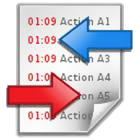Full Monte is an affordable risk analysis software for the project management industry that integrates seamlessly with Microsoft Project 2007 and higher. Our risk software is perfect for those in aerospace and defense, construction project management, technology project management, engineering, government contracts and more.
Full Monte, is affordable, fast, and easy-to-use. Full Monte utilizes the Monte Carlo simulation method. With Full Monte, you’ll be able to better understand the risks involved in your projects and to minimize those risks as much as possible.
“I’ve actually tested three different Monte Carlo schedule risk analysis products and Full Monte is the only one that has been able to successfully perform the analysis on the Microsoft Project test schedule.”
Sandra Schensky
Harris Corporation
Full Monte
Full Monte
Full Monte is a new schedule risk analysis software that integrates seamlessly with Microsoft Project 2007 and 2010. Full Monte utilizes the Monte Carlo simulation method, and is affordable, fast, and easy-to-use. With Full Monte, you’ll be able to better understand the risks involved in your projects and to minimize those risks as much as possible.
Full Monte includes the following features:
 Cost Tornado Chart for Specific Summary Task:
Cost Tornado Chart for Specific Summary Task:
- Support for normal, lognormal, beta, triangular, and uniform distributions.
- Probabilistic and conditional branching
- Unlimited Correlations between task durations
- Fast and comprehensive Sensitivity analysis, including “tornado” chart
- Distributions can be specified with optimistic and pessimistic values.
- Customizable S Curve/histogram.
- Bar charts produced for duration, numeric, and cost fields.
- Calculation of expected value and standard deviation of early and late start, early and late finish, free and total slack, and cost for each task.
- Histograms and s-curves of early and late start, early and late finish, free and total slack, and cost for each key task.
- Calculation of active percentage (for branching), critical percentage, sensitivity index, and project finish dates based upon optimistic and pessimistic durations (sensitivity analysis) for each task.
- Data in tabular reports can be exported to CSV format (suitable to import into Excel).
- MS Project customizable and fields are available in Full Monte reports.
- User-configurable mapping of data to MSP fields to allow coexistence with other Add-Ins.
- Easy to use (no VBA or similar programming required for any of these features).
- Fast (3,614 task network, 1,000 simulations, about 30 seconds on a fast laptop).
- Utility to migrate data from Deltek Risk+.
- The edit dialog shows visually what the specified distribution looks like

 Cost Tornado Chart for Specific Summary Task:
Cost Tornado Chart for Specific Summary Task:
Why Is Full Monte So Fast and Does It Matter?Full Monte operates as a Microsoft Project add-in and has proven to be one of the fastest risk analysis tools currently in production.Full Monte – Fast, Accurate Risk AnalysisThe speed of Full Monte often amazes people. A recent test showed it to be about 130 times as fast as another schedule risk analysis add-in. The main reason for this is that all the algorithms are coded from scratch in Full Monte, rather than using functionality in Microsoft Project. Another risk analysis software competitor stores the duration samples in the duration field before getting Project to do the time analysis. Another possibility would be to do the time analysis internally but to use Project to do the basic date calculations. (A date calculation is when a duration is added to a date, or two dates are subtracted to obtain a duration, having regard to the relevant calendar.) Project supports a wide range of calendar exceptions (e.g. the third Thursday of November every year) which makes date calculations quite complex and potentially time-consuming.The big potential overhead is in the communication channel between a Microsoft Project Add-in and Project, and Full Monte minimizes its usage of this channel by getting its data once at the start of processing and putting its results back once at the end of processing. Other risk analysis software and project management tools need to communicate with Project multiple times on every iteration.But does it matter? Speed makes it more acceptable to do relatively large numbers of iterations especially on large networks. The larger the network the more important it is to do a large number of iterations, to ensure that one gets a representative sample from each task. But also of course the larger the network the longer each iteration takes. So the time taken to get a good sample is likely to go up as the square of the number of tasks. Full Monte can do 1000 iterations on a 3600 task network in about half a minute on a modern laptop.
Full Monte is a fast, easy to use, accurate and affordable risk analysis software used by companies nationwide. Full Monte is a Microsoft Project add-in that integrates seamlessly with both Microsoft Project 2007 and 2010. Here are a few of our clients:
















| Quantity | Price per license (USD) |
| 1 | $1,195.00 |
| 10 | $1,075,00 |
| 15 | $1,036.00 |
| 20 | $1,016,00 |
| 50 | $980,00 |
| 100 | $968,00 |
Choosing A DistributionFull Monte supports five different families of distribution: normal, lognormal, beta, triangular, and uniform. Other project management tools support more, but even with five, the choice is likely to be daunting for many users. The fact is that it doesn’t matter that much. As Sam Savage says in his recent book (The Flaw of Averages), “In the land of averages the man with the wrong distribution is King.” Nevertheless, some guidance might be in order.Normal DistributionMany natural stochastic processes seem to result in the Normal distribution, which is perhaps where it gets its name. One explanation for this is the Central Limit Theorem, which says that if you add a number of independent random variables together, regardless of what individual distributions they are drawn from (as long as each has a finite mean and standard deviation), the distribution of the sum will tend towards the normal distribution. So, to the extent that a task could be regarded as a succession of smaller tasks, it would not be surprising if the distribution of task duration were normal.
One problem with the normal distribution, however, is that it is symmetrical. It also has infinitely long tails, so by definition any normal distribution includes a finite possibility of negative values. A negative task duration is not easily interpreted and generally not allowed. (This may seem like it contradicts the central limit theorem but it doesn't as the number of random variables added together increases, the mean increases faster than the standard deviation, and the distribution tends towards normal. At the infinite limit the size of the negative tail tends to zero.) For the purposes of Full Monte, it is assumed that the user-defined optimistic and pessimistic values represent a six–sigma range and the sampling method suppresses values outside that range.Lognormal DistributionFull Monte is a schedule risk analysis tool that operates seamlessly as a Microsoft Project add-in. While Full Monte supports normal distributions, it is often the case that people think an asymmetrical distribution is more representative of reality. In particular, they think it is more likely that the actual duration will exceed the expected value by a large amount than that it will fall short of it by the same amount. To take an extreme example, if things go badly wrong a task could take twice as long as expected, whereas there is no chance that it will take no time at all. One convenient asymmetric distribution is the lognormal distribution.
The lognormal distribution is the distribution of a variable whose logarithm is distributed normally. Since the log of zero is minus infinity – or more properly the log(x) tends to minus infinity as x tends to zero – this means that the left-hand tail of the distribution has a definite end point at zero. So, the duration cannot be negative and that’s a good thing. The right hand tail is still infinite, however. In Full Monte, the user specifies two values defining a six-sigma range, and the whole shape of the distribution is determined by the ratio of these two values. (If the ratio is small, the lognormal looks much like the normal distribution.) Dan Trietsch of the American University of Armenia offers some empirical evidence that the lognormal distribution is often appropriate. (See here.)Beta DistributionFull Monte supports five of the most common distribution families, including beta distribution. Some people want more control of their asymmetric distributions, and that is where the beta distribution comes in.Actually, a true beta distribution has four parameters and offers rather more control than most people can handle. It comes in some very unlikely shapes, as you can see here. Nevertheless, the PERT technique was based on a subset of the beta distribution (sometimes called the PERT distribution or the PERT -Beta distribution) and Full Monte follows project management tradition and uses this. The user specifies three values – optimistic, most likely, and pessimistic. Unlike previously discussed distributions, it has a hard cut-off at the optimistic and pessimistic points but otherwise it is not unlike a normal distribution when the most likely is close to the center of the range.
Full Monte is a Microsoft Project add-in for schedule risk analysis. Full Monte is fast, affordable and easy-to-use.
Triangular DistributionIn addition to the Beta distribution, project management tradition has also favored the triangular distribution, which as its name suggests is in the shape of a triangle. Again, the user specifies optimistic, most likely, and pessimistic values. (Either the optimistic or the pessimistic can be the same as the most likely, to create a right-angled triangle.) It is hard to imagine that this is an accurate representation of many natural processes, though it is the distribution of the sum of two uniformly distributed variables.Uniform DistributionThat brings us to the uniform distribution, which just looks like a rectangle. Every value between the optimistic and pessimistic values is equally likely. It is the correct distribution for the time you have to wait for a bus, given that you arrive at some random time and you don’t know the schedule.Full Monte is a Microsoft Project add-in for schedule risk analysis. Fast, accurate, affordable and user-friendly.Full Monte – Fast, Accurate Sensitivity AnalysisProbably the single most important output from schedule risk analysis is the probability distribution of the project finish date. But many project managers also want to understand how sensitive this project finish date is to the uncertainty surrounding the durations of individual tasks. (This is roughly analogous to wanting to know the critical path, in addition to when the project is meant to finish in a deterministic CPM). Full Monte offers two measures of this – Sensitivity analysis and the sensitivity index.Sensitivity AnalysisThe more obvious of the two is sensitivity analysis. Sensitivity analysis proceeds by taking each task in turn and calculating what the project finish date would be if that task’s duration turned out to be either at its most optimistic or at its most pessimistic. (For the purpose of these two calculations, the durations of all other tasks are assumed to take their expected values.) The two calculated project completion dates are stored on the task for reporting later. The common report generated by our Full Monte risk analysis software is a bar chart showing the difference between the two project finish dates, sorted in descending order of the length of this bar. Of course, there will generally be a number of tasks which have no effect on the project finish date at all – on the standard Full Monte report, these tasks are left out altogether. The resulting sensitivity and risk analysis report is called a Tornado chart because of its resemblance to a tornado.The Tornado chart is useful in drawing attention to the tasks which potentially have the greatest influence on the project finish date, but attention should be paid to the relative lengths of the bars rather than their absolute lengths. The absolute lengths can be misleading, because they do not take into account the likelihood of these extreme events. Thus, a task may have a pessimistic duration of 60 days and if this duration were to come to pass it might result in an unacceptably late project finish. But in Full Monte this is interpreted as being a 3-sigma event, and as such is very unlikely. On the other hand, if there are a number of tasks with a similar potential effect on the project finish date, then this may be more cause for concern.Full Monte – Sensitivity Analysis MeasurementsFull Monte is a schedule risk analysis tool that integrates seamlessly with Microsoft Project – giving you a fast, accurate and easy to use risk and project management tool. While sensitivity analysis is a major function of any risk analysis report, sensitivity index is another useful measurement highlighted in Full Monte.Sensitivity IndexSensitivity analysis can potentially take a long time on very large networks because it involves doing the whole time analysis as many times as there are tasks. (This could be circumvented to a degree by not doing it for tasks which are never critical, but this can only be known with sufficient certainty after doing a risk analysis with an appropriate number of simulations.) An alternative measure of sensitivity is the sensitivity index, calculated by Full Monte during the Monte Carlo simulation. This is a somewhat arbitrary measure defined as:Sensitivity index = (critical index) x (standard deviation of task duration) / (standard deviation of project finish date)
Like the criticality index, the sensitivity index is expressed as a percentage. It is displayed alongside the bars in the standard Tornado report and generally correlates well with the length of the bars. It should be clear from the definition that it is zero when either the task is never critical or the duration is fixed, and 100% when the task is always critical and the task duration varies as much as the project finish date does.
(For this purpose, the variation in project finish date is measured relative to the task’s calendar. For other purposes, the standard deviation of the project finish date, like other dates, is measured in elapsed time, since there may be various calendars contributing to it.)
Full Monte Download
Choose one of the following to download a risk-free 30-day trial of Full Monte. (If you want to purchase a perpetual license to use the software, you should still first download this trial. When you run Full Monte you will have the opportunity to purchase a license key) Click here for the standard download. This download is recommended for most situations. It includes only the software and is therefore relatively small. Any prerequisites from Microsoft which are not currently installed on your computer will be downloaded from Microsoft’s web site.Click here for the full download. This download includes all prerequisites within itself. Use it if you intend to install on a machine which is not connected to the internet.You may also want to download two short documents: click here for Quick Start instructions and here for release notes.If you are not ready to download the software, you can instead download a two-page brochure by clicking here or the Full Monte User Guide (84 pages) by clicking here. (The User Guide is also included in the trial software download above.)














